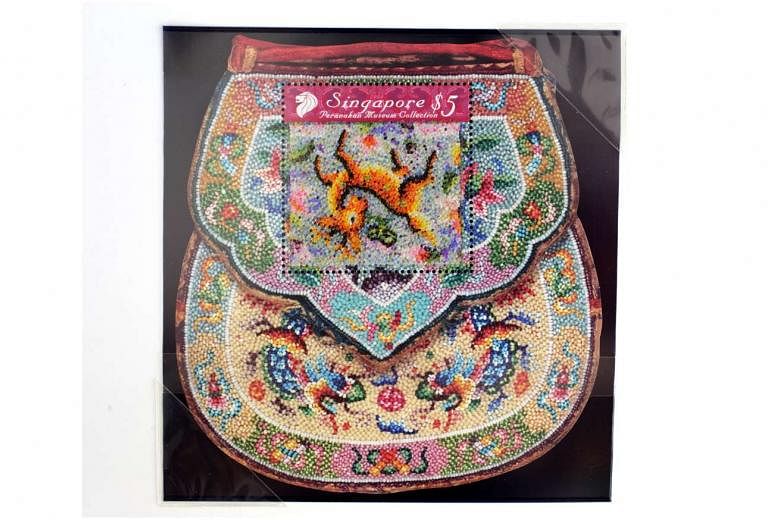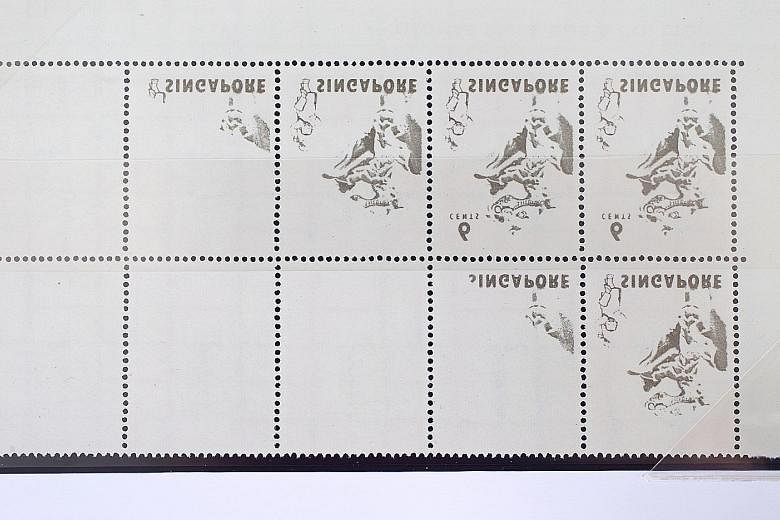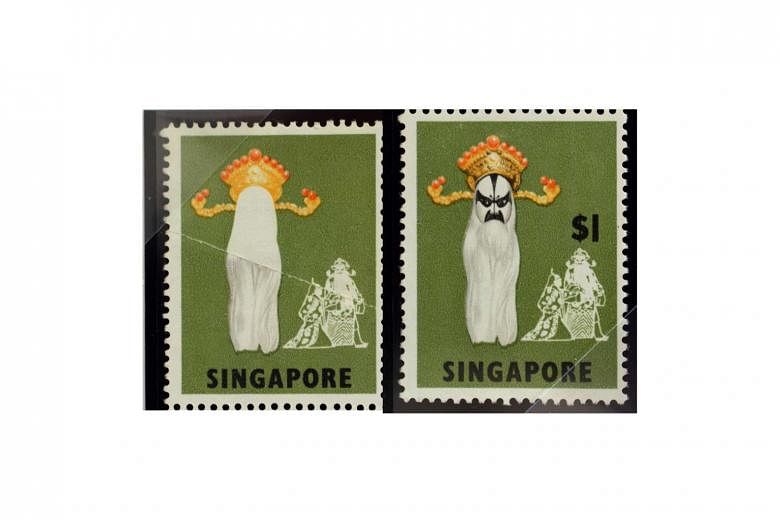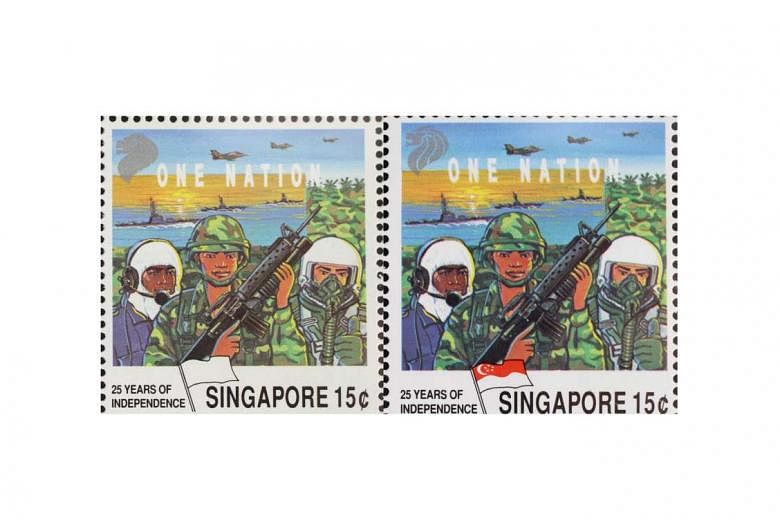Missing colours, missing words or upside-down animals are just some of the weird things you may see on a Singapore postage stamp - if you are lucky.
For the handful of people who spend indeterminate amounts of time and money tracking down these oddities, it goes beyond being just a treasure hunt, to a hunt to discover how the mistakes happened.
"There's always a sense of elation on finding something, but it's not just a matter of buying the thing. I like to see it from an intellectual perspective - how the printing process works and how the error happened," said Mr Hong Tuck Kun, 63, a senior bank manager by day who is internationally recognised in philatelic circles as the leading authority on Singapore stamp errors.
In fact, it was only by counting the stamps in his collection last week that The Straits Times was able to determine that some 55 major errors had occurred in Singapore stamps over the last 60 years.
Errors can happen in various ways, such as when colours are omitted or shifted, wrong information is incorporated into the design, or the perforations that border the stamp are missing or misaligned.
Mr Hong said the 1960s and 1970s saw a "golden era" of stamp errors, when a method of multicoloured printing, called photogravure, was increasingly used for stamps.
And British-printed Singapore stamps were error-prone compared to Japanese-printed ones. He has not encountered a single error on the latter, and attributes it to the printer's attention to detail.
Singapore Post (SingPost) said the printing firms are responsible for the first level of checks as the stamps leave the press, and any flawed ones found are destroyed.
A second round of checks is done by SingPost staff. However, it said that errors may occur in the various stages of stamp production.
The Singapore Philatelic Museum said it has some stamps with errors but they are not on display.
Mr Hong remembers the challenge of getting his hands on stamp errors for the first time decades ago. He was then a schoolboy and did not have enough pocket money.
The stamps cost a couple of hundred dollars, and he took a few months to complete the payment in instalments.
Mr Tan Chun Lim, 72, owner of local stamp dealership CS Philatelic Agency, said stamps with errors change hands perhaps once or twice a year, when their owners die, give up stamp collecting or sell them for financial reasons. He reckons there are fewer than 10 serious collectors of Singapore stamp errors.
One of Mr Hong's favourite errors is the now-famous upside-down deer in the 2008 miniature sheet marking the opening of the Peranakan Museum. It is probably the only copy in existence. He paid a five-figure sum for it - the highest he has paid for an error.
In 2015, he chanced on an opportunity to show it to a representative of the printer, French firm Cartor Security Printing, who immediately realised what had gone wrong.
The stamp in the middle of the sheet incorporated a layer of transparent beads in its design.
Cartor had printed a separate copy of the stamp, stuck the beads on it, and pasted it on top of the unbeaded stamp in a separate miniature sheet to make the finished product.
On one occasion, they stuck the stamp upside down.
Mr Hong made a colour photocopy of the error and got the Cartor representative to sign it as a form of authentication. He still relishes the moment to this day.
Collectors often acquire stamp rarities with investment in mind, hoping that the item will appreciate in value over time. But not Mr Hong, who does not keep track of what he spends on each item.
He said: "This is a hobby that enriches your life. I never buy for the purpose of resale. It's like going to a concert for two hours of entertainment - you don't sell back the ticket after that."





